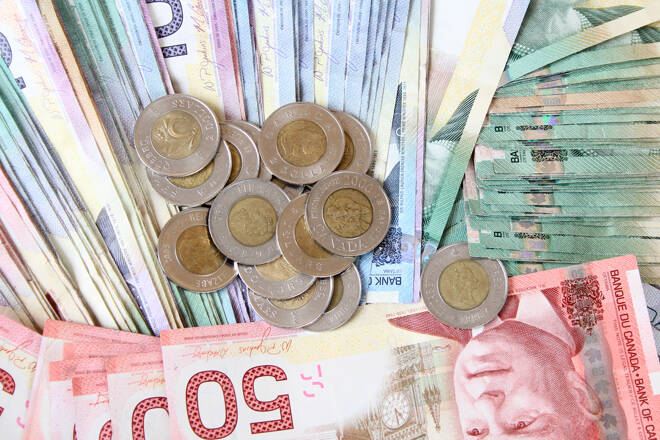Advertisement
Advertisement
USD/CAD: Loonie Strengthens as Oil Prices Rise on U.S. Supply Concerns
By:
The Canadian dollar strengthened against its U.S. counterpart on Monday after oil prices climbed over $70 a barrel as U.S. supplies have been restricted following Hurricane Ida, which hit almost half of crude production in key producing regions.
The Canadian dollar strengthened against its U.S. counterpart on Monday after oil prices climbed over $70 a barrel as U.S. supplies have been restricted following Hurricane Ida, which hit almost half of crude production in key producing regions.
The USD/CAD pair fell to 1.2643 today, down from Friday’s close of 1.2689. The Canadian dollar lost over 1.2% last month and has depreciated about 0.3% so far this month.
Canada is the world’s fourth-largest exporter of oil, which edge higher on low U.S. output after Hurricane Ida. U.S. West Texas Intermediate (WTI) crude futures were trading 1.05% higher at $70.46 a barrel. Higher oil prices lead to higher U.S. dollar earnings for Canadian exporters, resulting in an increased value of the loonie.
“The electoral campaign in Canada is set to remain in focus with only 10 days to go before the vote, and we think that CAD is currently discounting some political risk as opinion polls show neither of the two major parties (Liberals and Conservatives) as likely to secure a full majority in the House,” noted Francesco Pesole, FX Strategist at ING.
“Next week, CPI data will be the main highlight and another above-consensus read may further support hawkish expectations on the BoC, but once again, political risk may cap CAD gains for now. Once political uncertainty dissipates, a short-term undervaluation vs USD (2.1%, according to our fair value model) and solid fundamentals all point to a rebound in the loonie, in our view.”
The dollar index, which measures the value of the dollar against six foreign currencies, was trading 0.02% higher at 92.599. On Tuesday, September 14, the consumer price index is scheduled to be released. Global trends and inflation data will drive equity markets next week, which after a run of record-breaking trades have taken a breather. If the data continues to be hot, Treasury yields could rise, which would be negative for the market.
However, it is highly likely that the world’s dominant reserve currency, the USD, will rise by end of the year, largely due to the expectation of two rate hikes by the Fed in 2023. With the dollar strengthening and a possibility that the Federal Reserve will raise interest rates earlier than expected, the USD/CAD pair may experience a rise.
In August, Canada added 90,200 jobs, and the unemployment rate fell to 7.1%, its lowest level since the Coronavirus pandemic began. The data might support the Bank of Canada’s next taper in October. The Governor of the Bank of Canada, Tiff Macklem, said on Thursday that Canada is on its way to no longer needing quantitative easing to stimulate the economy.
Last week, the Bank of Canada held its key interest rate, citing fears that the pandemic and supply bottlenecks might stall the economic recovery. The central bank has maintained its overnight rate target at 0.25% and said it will continue buying bonds at a rate of $2 billion a week as part of its quantitative easing program.
About the Author
Vivek Kumarauthor
Vivek has over five years of experience in working for the financial market as a strategist and economist.
Advertisement
